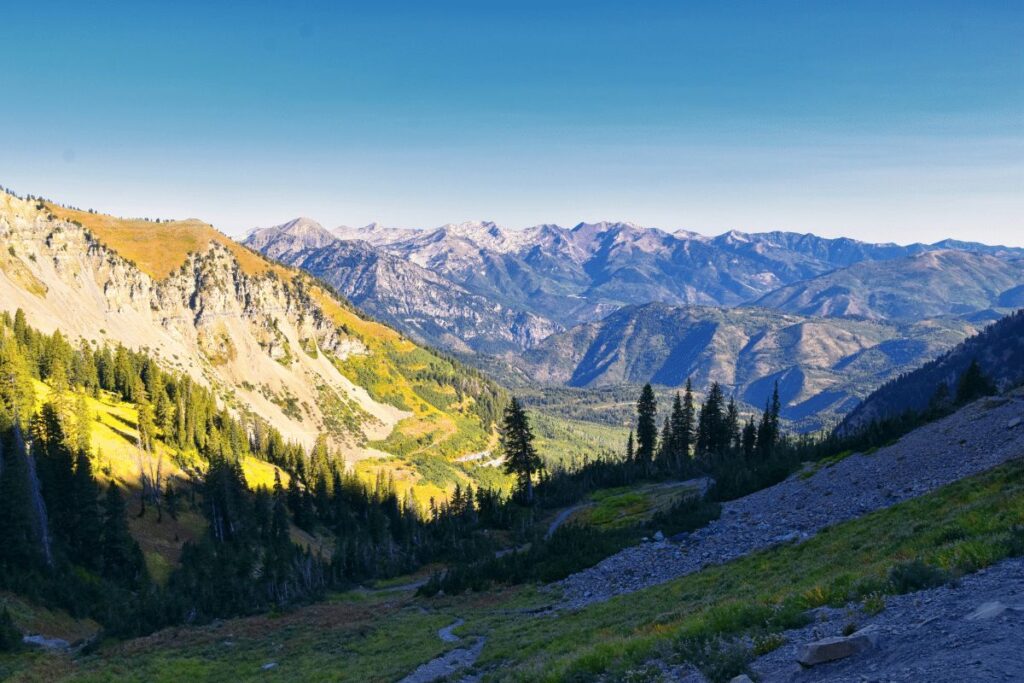Explore Uinta Wasatch Cache National Forest: trails, wildlife, camping & more in our guide!
Ready to swap your screen time for wild time? Welcome to Utah’s Uinta-Wasatch-Cache National Forest—a 1.5 million-acre playground for outdoor enthusiasts!
Forget about levels; here, every trail promises an adventure, whether you’re scaling high peaks for jaw-dropping vistas or strolling through serene meadows.
You might bump into a moose, get a nod from a deer, or lock eyes with a mountain lion. And let’s not forget the forest’s feathered celebrities—hawks soaring high and grouse playing hide and seek.
So, grab your boots and water bottle, and let’s dive into what the Uinta-Wasatch-Cache National Forest holds for you. From heart-pumping hikes like the Hidden Valley Trail to the tranquil paths of Ogden Canyon Overlook, this guide’s got your back.
Plus, we’ll spill the beans on the best spots to camp and other cool things to do. Get set for a trip where the wild things roam and the memories last a lifetime!
An Overview of Uinta Wasatch Cache National Forest
When we think of the natural wonders that Utah offers, the Uinta Wasatch Cache National Forest inevitably stands out. Spanning an impressive expanse within the Rocky Mountains, this forest is more than just trees and trails—it’s a testament to nature’s artistry and the rich tapestry of history.
Why does the Uinta-Wasatch-Cache National Forest hold such a special place in our hearts? Well, apart from being one of Utah’s prime outdoor destinations, it captures the very essence of wilderness.
Whether you’re a seasoned adventurer seeking your next thrill or someone looking for a serene escape, this forest beckons with promises of unspoiled beauty and adventure.
Diving a little into its history, the establishment of the Uinta-Wasatch-Cache National Forest is a fascinating journey in itself. Over the years, we’ve seen this sanctuary grow and evolve, always preserving its essence while adapting to the changing times.
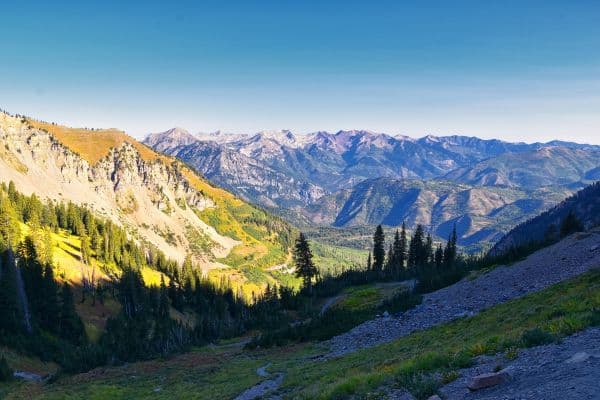
It’s not just a forest; it’s a legacy that has been passed down, ensuring that future generations can marvel at its splendors just as we do today.
Geographically speaking, its location is truly strategic. Nestled comfortably within the Rocky Mountains, the forest benefits from a unique topography that is both diverse and captivating.
The undulating terrains, from towering peaks to gentle meadows, create a diverse habitat that attracts a rich variety of flora and fauna. As we wander through its vast expanse, we’re constantly reminded of the delicate balance of nature and the wonders it brings.
But it’s not just about the location. What truly sets the Uinta-Wasatch-Cache National Forest apart are the unique features it boasts. Every corner seems to tell a story, every trail has its own charm, and every view? Simply breathtaking. It’s these features, combined with its rich history and prime location, that make it an unmissable destination in Utah.
Hiking Trails in Uinta Wasatch Cache National Forest
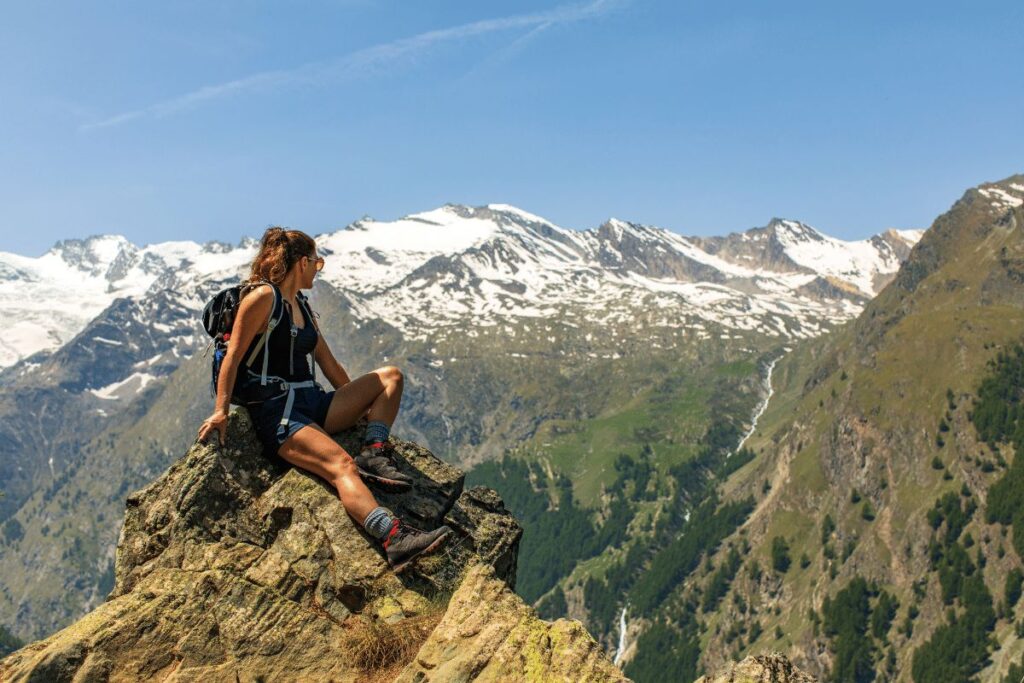
There are over 1,000 miles of hiking trails in the Uinta-Wasatch-Cache National Forest, so there’s sure to be a perfect trail for every hiker. From easy, scenic walks to challenging backpacking routes, there’s something for everyone.
Stewart Cascade Trail (Moderate)
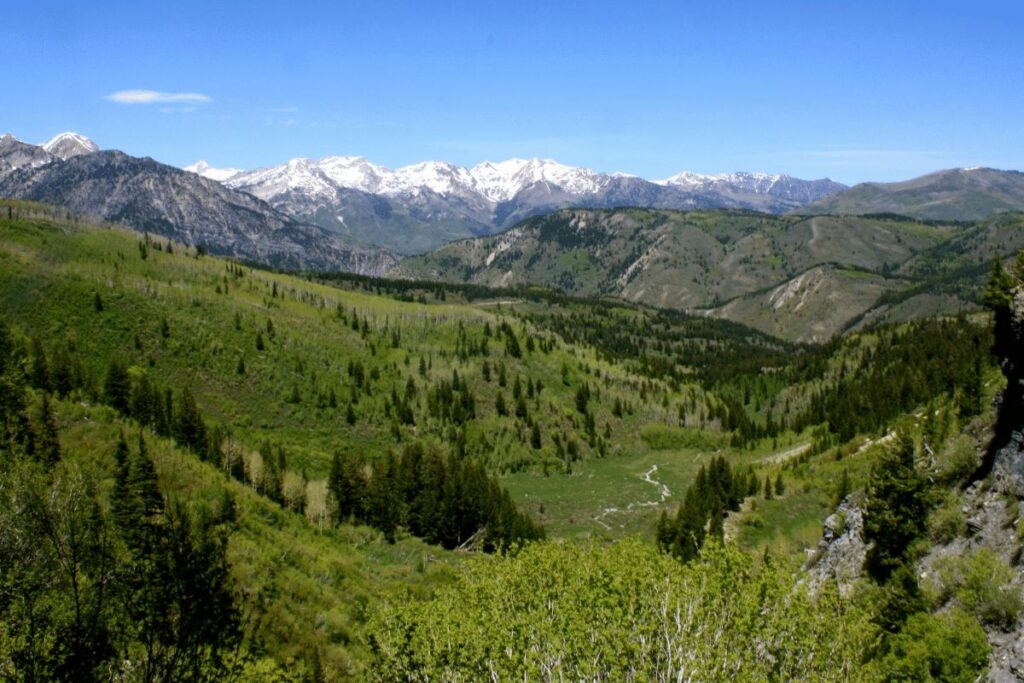
Just a half-mile from the popular Timpanogos Cave National Monument, the Stewart Cascade Trail is a great option for those looking for a moderate hike with stunning views. The trailhead begins at the Aspen Grove Campground and follows a winding path through the forest. After about a mile, hikers will reach the Stewart Falls overlook, where they can take in the beautiful scenery before heading back down to camp.
Hidden Valley Trial (Hard)
The Hidden Valley Trial is a great hike for those who are looking for a challenge. This hike is considered to be one of the more difficult ones in the Uinta-Wasatch-Cache National Forest. The trailhead is located at the north end of the Mirror Lake Highway, just before the Bald Mountain turnoff.
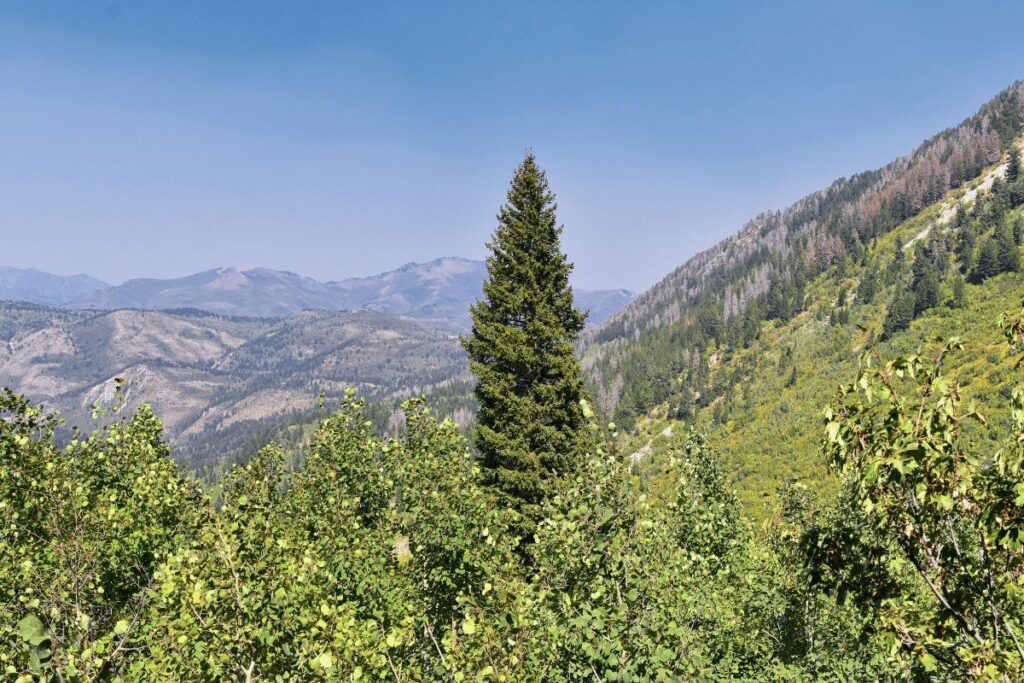
The trail climbs steeply up the side of Bald Mountain, gaining about 2,000 feet in elevation over the course of the hike. The views from the top of Bald Mountain are incredible, and it’s definitely worth the effort to make it to the summit.
After reaching the top of Bald Mountain, the trail descends into Hidden Valley, where you’ll find a beautiful lake surrounded by towering cliffs. This is a great place to take a break before beginning the hike back out to the trailhead.
Skull Crack Trail (Moderate)
Skull Crack Trail is a moderate hike that begins in the parking lot of the American Fork Canyon and gains about 1,000 feet of elevation. The trail is narrow and follows a ridge line with drop-offs on either side, so use caution.
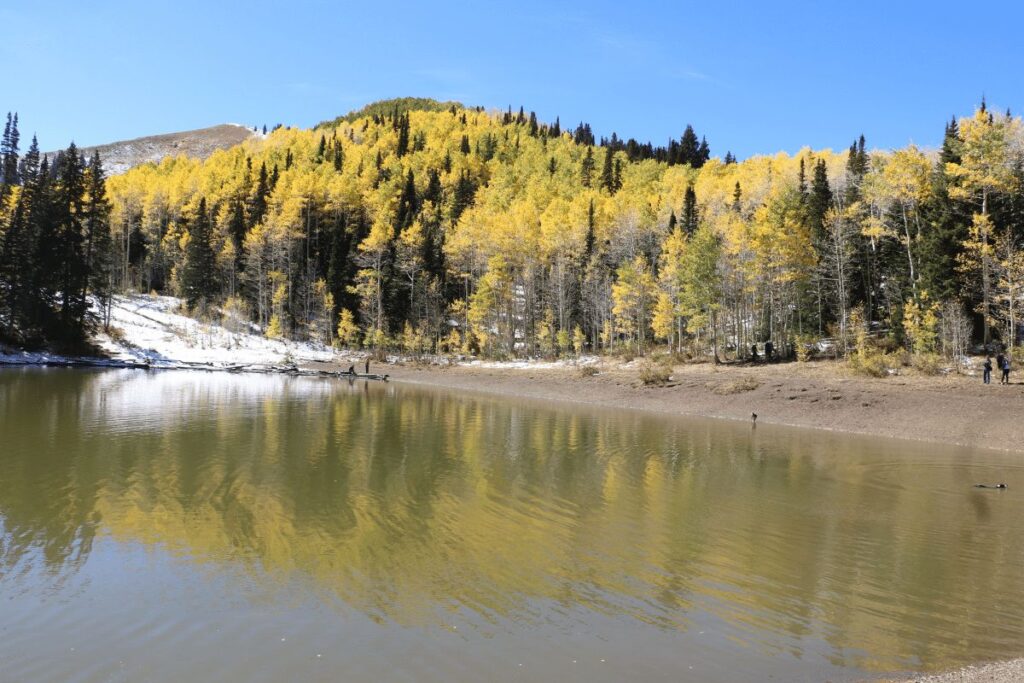
There are amazing views of Timpanogos Mountain, Lone Peak, and the valley below. The trail ends at a 4-way junction with the Timpanogos Summit Trail, Cascade Springs Trail, and Mt. Timpanogos Trail.
Crimson Trail (Hard)
The Crimson Trail (Hard) is a challenging hike that is not for beginners. This trail is located in the Uinta-Wasatch-Cache National Forest and is known for its breathtaking views. The trailhead is located at the end of the road near the gate. The trail is well-marked and easy to follow.
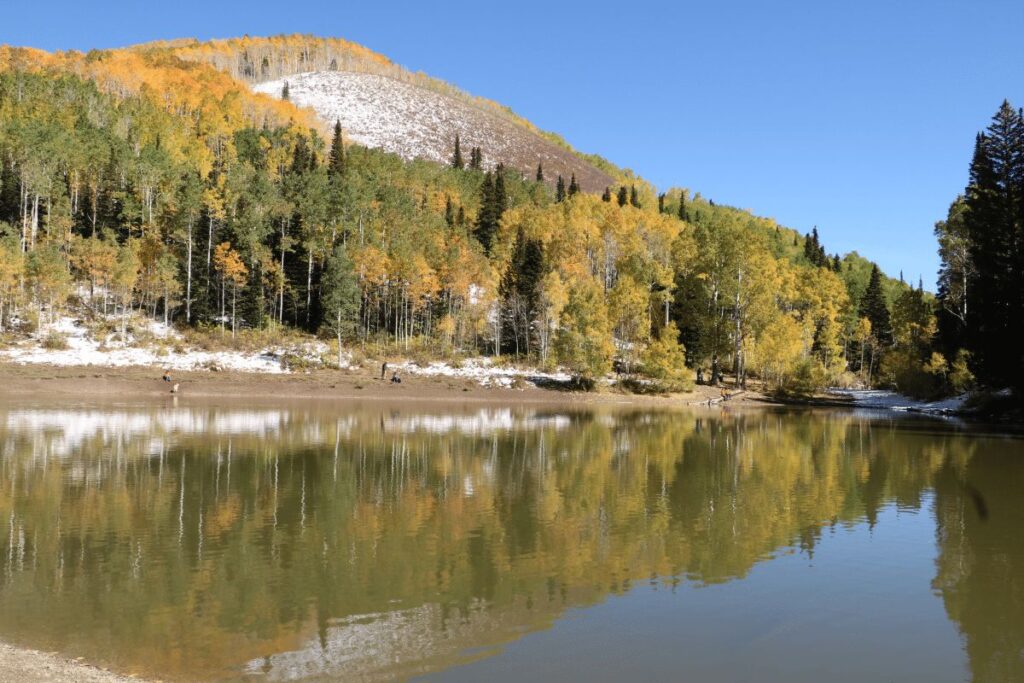
There are a few steep sections, but nothing that should deter someone in good hiking shape. The total distance of the trail is 8 miles with an elevation gain of 3,000 feet. Allow yourself 5-6 hours to complete the hike.
Once you reach the top of the trail, you will be rewarded with stunning views of the valley below. Be sure to take plenty of water and snacks, as there are no services along the way. This is a popular trail, so you may encounter other hikers along the way. Remember to pack out all trash and leave no trace.
Battle Creek Falls Trail (Moderate)
The Battle Creek Falls Trail is a moderate 4.6-mile out-and-back hike in the Uinta-Wasatch-Cache National Forest. The trailhead is located at the north end of the Battle Creek Campground. The trail meanders through a mixed forest of aspen, fir and pine trees before reaching the falls.
The trail then continues along the creek for another 0.5 miles to an overlook with views of the valley below. There are several good camping spots along the trail and at the falls.
Ogden Canyon Overlook Trail (Moderate)
Ogden Canyon Overlook Trail is a moderate trail that leads to stunning views of Ogden Canyon. The trailhead is located at the East Fork Parking Area, and the trail is 3 miles round trip. This trail is perfect for those who want to enjoy the beautiful scenery without having to hike an extremely difficult trail. Along the way, you’ll see stunning views of the canyon, as well as wildlife such as deer and birds.
Waterfall Canyon Trail (Moderate)
The Waterfall Canyon Trail is a moderate 4.6-mile out-and-back hike located in the Uinta-Wasatch-Cache National Forest. The trailhead is located at the junction of the Mirror Lake Highway and the Provo River Parkway, and the trailhead parking lot can be accessed from either road.
The trail is well-marked and easy to follow, and there are several campsites along the way if you want to make a weekend of it. The first mile or so of the trail is relatively flat, but the remainder of the hike is uphill as you gain elevation to reach the waterfall. The views from the top are worth it, and you can cool off in the waterfall before heading back down to your car.
Wildlife in the Forest
The Uinta-Wasatch-Cache National Forest is home to a wide variety of wildlife, including several species of mammals, reptiles, amphibians, birds, and fish. Some of the more common animals that can be seen in the forest include deer, elk, moose, bears, coyotes, cougars, and bobcats. There are also several species of rodents, such as mice and squirrels.
The forest is also home to many different types of birds, such as hawks, eagles, owls, and woodpeckers. Several species of waterfowl can also be found in the Forest’s many lakes and ponds.
Fish are abundant in the Uinta-Wasatch-Cache National Forest as well. Some of the more popular gamefish include trout, bass, and catfish.
Red-Tailed Hawks
The Uinta-Wasatch-Cache National forest is home to a variety of wildlife, including red-tailed hawks. These birds of prey are commonly seen soaring above the forest, and can also be found perching on tree branches or hunting for food.
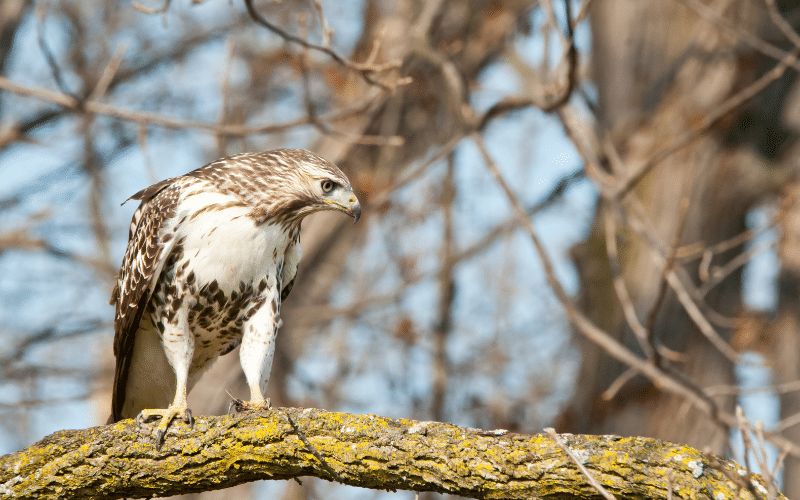
Red-tailed hawks are relatively large birds, with wingspan that can reach up to six feet. They are mostly brown and white, with a distinctive reddish-brown tail. These hawks are opportunistic hunters and will eat a wide variety of prey, including small mammals, reptiles, and other birds.
If you’re lucky enough to spot a red-tailed hawk while hiking in the Uinta-Wasatch-Cache National Forest, be sure to take some time to appreciate these magnificent creatures.
Elk
Elk are the largest land mammals in North America. They weigh between 700 and 1,000 pounds and stand between five and seven feet tall at the shoulder. Elk are herbivores and eat a variety of plants, including grasses, sedges, forbs, shrubs, and trees. In the summer, elk eat more foliage than in the winter when they primarily consume woody browse.
Elk are found in many different habitats including forests, meadows, wetlands, and even deserts. However, they prefer areas with abundant vegetation that provides cover from predators and inclement weather.
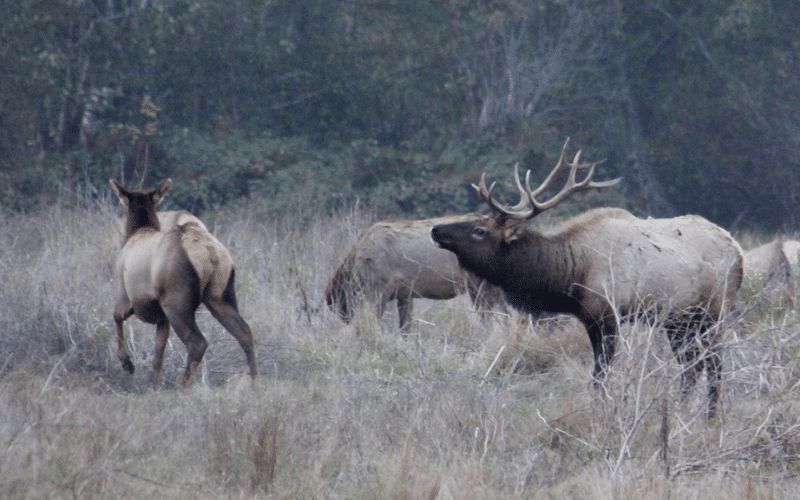
Elk generally avoid human development but will use developed areas if necessary for food or shelter.
The best time to view elk is early morning or evening during the summer months when they are active. During the fall mating season (rut), bulls can be seen fighting for dominance over the harems of cows. Cows give birth to one to two calves in late spring or early summer.
If you’re lucky enough to see an elk in the wild, enjoy the experience from a distance as they are wild animals and should not be approached.
Mountain Goats
The Uinta-Wasatch-Cache National Forest is home to many different species of animals, including the mountain goat. Mountain goats are sure-footed climbers, often seen on rocky slopes and outcrops. They use their sharp hooves and horns to clamber about, seemingly effortlessly.
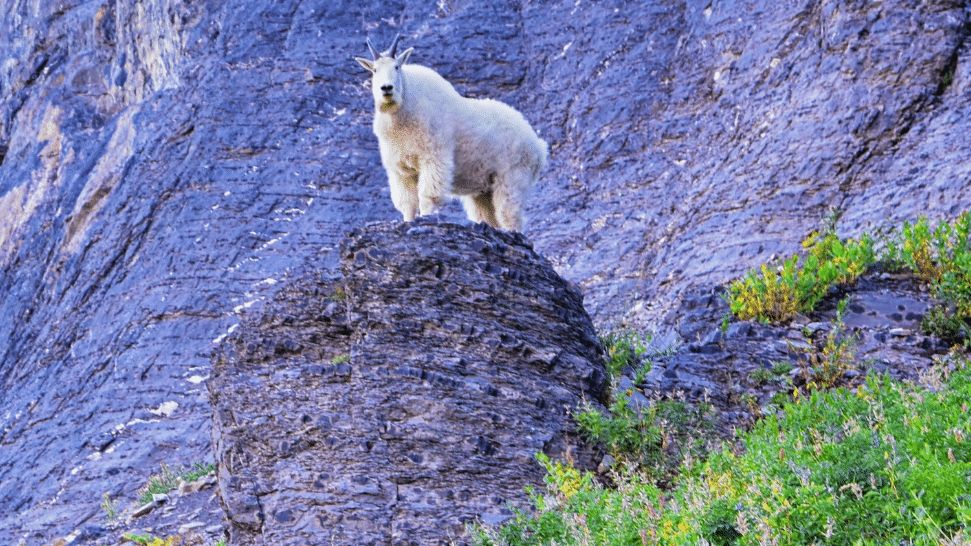
Mountain goats are interesting creatures. Although they are not actually goats, they are more closely related to antelope and deer. They are well-adapted to life in the mountains, with thick fur coats that keep them warm in winter and cool in summer. They are also excellent swimmers.
If you’re lucky enough to see a mountain goat in the wild, take care not to disturb them. These animals are important members of the mountainous ecosystem and play a vital role in the food chain.
Bighorn Sheep
Bighorn sheep are one of the most popular animals in the Uinta-Wasatch-Cache National Forest. These majestic creatures can often be seen grazing on the hillsides or in the meadows.
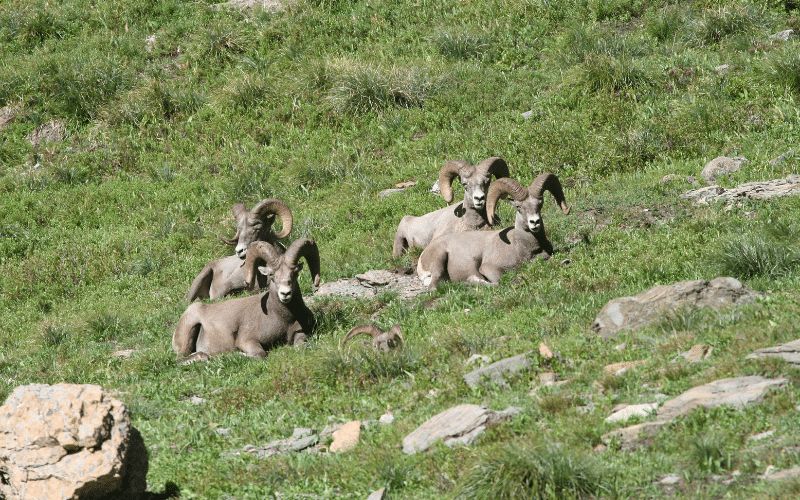
There are several hiking trails in the forest that offer great opportunities to view bighorn sheep. One of the best places to see them is along the Mirror Lake Scenic Byway. This beautiful stretch of road winds through forests and meadows and offers many pull-offs where you can stop and enjoy the scenery. Bighorn sheep are often seen in this area, so keep your eyes peeled!
If you’re lucky enough to spot a bighorn sheep, be sure to stay a respectful distance away. These animals are wild and should not be approached too closely. However, watching them from a distance is an unforgettable experience that shouldn’t be missed when visiting the Uinta-Wasatch-Cache National Forest!
Rattlesnakes
Rattlesnakes are a common sight in the Uinta-Wasatch-Cache National Forest and can be found sunning themselves on rocks or hiding in the brush. T
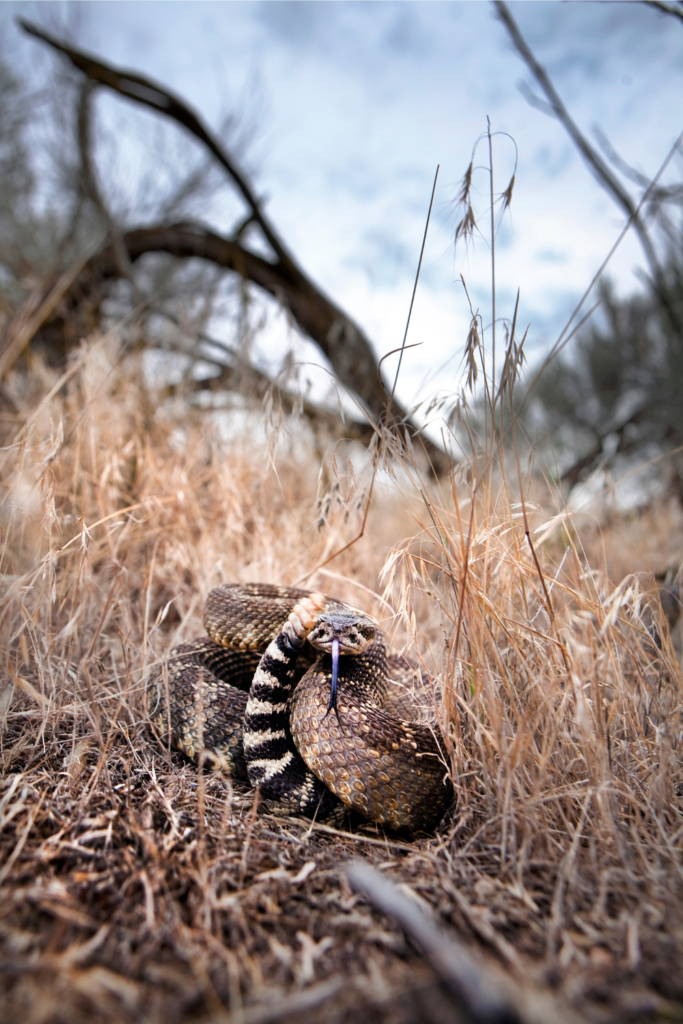
hese venomous snakes are not to be trifled with and should be avoided if possible. If you do encounter a rattlesnake, give it plenty of space and do not try to catch or kill it.
Moose
As the most prominent member of the deer family, moose are an impressive sight. They can weigh up to 1,500 pounds and stand six feet tall at the shoulder. Moose are well-adapted to life in the northern forests of North America and can be found in the Uinta-Wasatch-Cache National Forest.
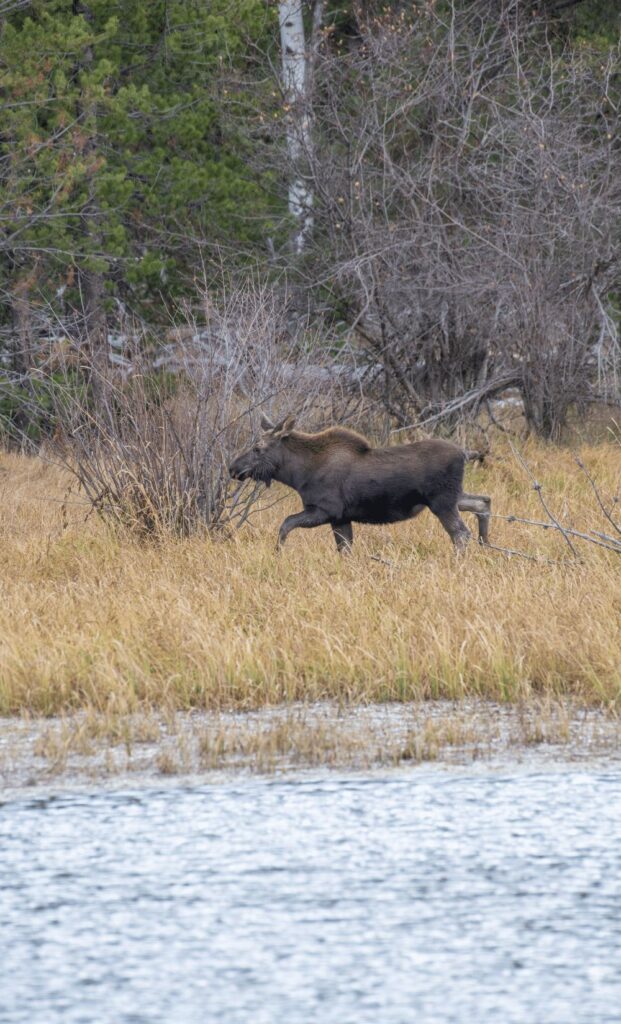
While they may appear sluggish, moose are actually quite fast and agile, able to run up to 35 miles per hour. They are also excellent swimmers and have been known to cross rivers that are a mile wide. Moose are most active at dawn and dusk but can be seen out feeding at any time of day.
In winter, moose spend a lot of time eating twigs and buds from shrubs and trees. This diet helps them to stay warm by increasing their internal body temperature. Moose will also eat aquatic plants in ponds and lakes.
If you’re lucky enough to see a moose while hiking in the Uinta-Wasatch-Cache National Forest, remember to give them plenty of space. These large animals can be dangerous if they feel threatened.
Mountain Lion
Mountain Lions, also called cougars or pumas, are large cats that live in the Western Hemisphere. In North America, they are found from southern Canada all the way down to the Andes in South America.
They are the biggest cat in North America and can weigh up to 200 pounds!
Mountain lions are solitary animals and typically only come together to mate. Females will give birth to two or three cubs at a time and will care for them until they are old enough to fend for themselves, which is usually around 18 months.
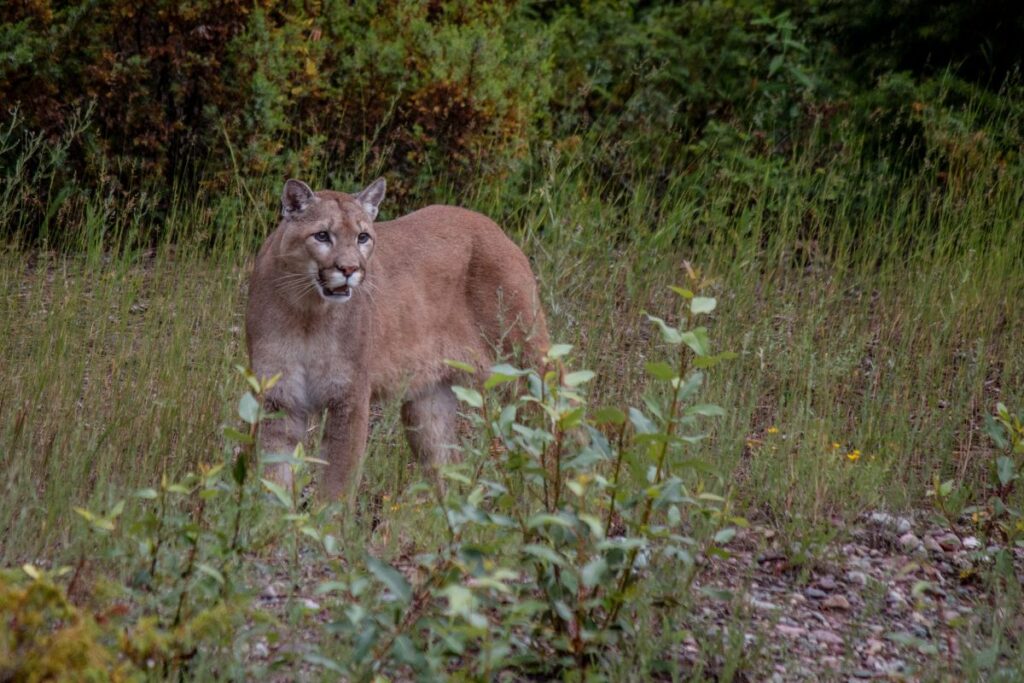
Mountain lions typically hunt at night and prefer to eat deer, but will also eat smaller animals like rabbits and squirrels. They are very good swimmers and climbers and can leap up to 20 feet!
If you’re lucky enough to see a mountain lion while you’re hiking in the Uinta-Wasatch-Cache National Forest, be sure to give it plenty of space and do not approach it. These animals are wild and should be respected as such.
Uinta Ground Squirrel
The Uinta ground squirrel is a medium-sized squirrel that inhabits the Uinta Mountains in Utah. They are one of the few species of ground squirrel that are active during the winter months. The Uinta ground squirrel is closely related to the chipmunk and the marmot.
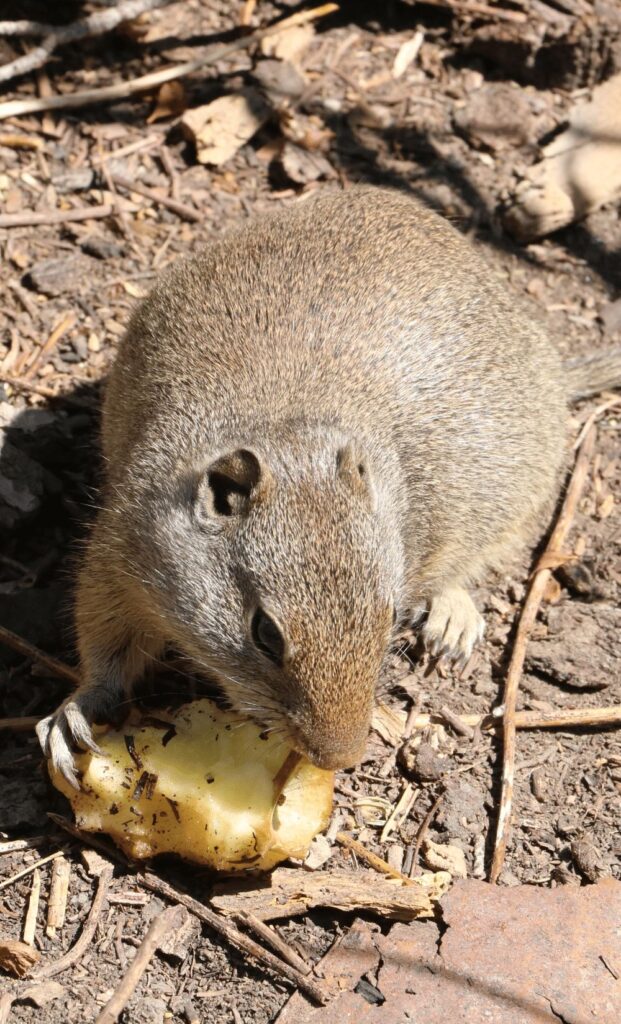
These squirrels hibernate for up to seven months out of the year. During this time, they do not eat or drink. Instead, they rely on their stored body fat to survive. When they awaken from hibernation, they are often very thin and dehydrated.
The Uinta ground squirrel is an important part of the ecosystem in the Uinta Mountains. They are a food source for many predators, including hawks, eagles, foxes, and weasels. They also help to disperse seeds and nuts throughout the forest floor.
Deer
If you’re looking to hike in the Uinta-Wasatch-Cache National Forest, there are plenty of trails to choose from. And, if you’re lucky, you might even spot some deer along the way!
The Uinta-Wasatch-Cache National Forest is home to a variety of wildlife, including deer. If you’re hiking in the forest, keep your eyes peeled for these beautiful animals.
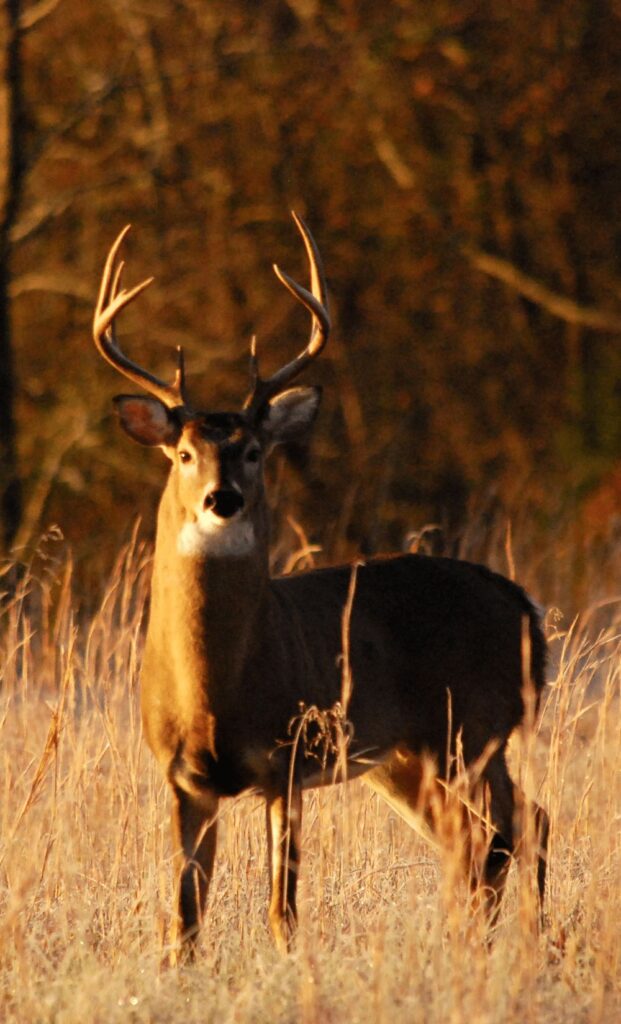
Deer are most active in the early morning and evening hours, so that’s a good time to go for a hike if you’re hoping to see one. They tend to stay close to cover and will often bed down in thick vegetation.
If you do spot a deer while hiking, enjoy the sighting from a distance. Remember not to approach or startle them, as they may bolt and could hurt themselves. Just enjoy the moment and take in the beauty of these amazing creatures in their natural habitat.
Dusky Grouse
The Dusky Grouse is a subspecies of the Blue Grouse and is found in the western United States, specifically in the Rocky Mountains. The males are known for their dark plumage and “drumming” display during mating season. The females are less brightly colored, but they too have the trademark blue hue in their feathers.
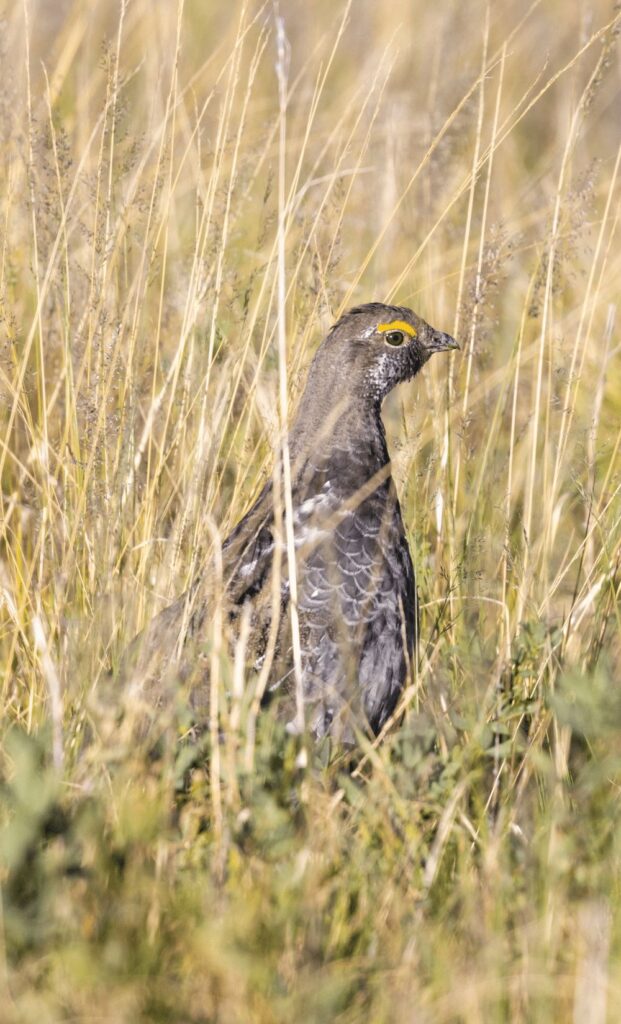
These birds can be found at high altitudes on rocky slopes and in forested areas. While they may seem elusive, if you’re lucky enough to spot one (or hear their drumming), it’s sure to be a memorable experience!
Camping in the Forest
If you love spending time outdoors surrounded by nature, then camping in the Uinta-Wasatch-Cache National Forest is the perfect activity for you. This forest offers a variety of hiking trails to explore, as well as an abundance of wildlife to see.
One of the best things about camping in the forest is that there are no crowds. You can enjoy the peace and quiet of being surrounded by trees, fresh air, and wildlife. Camping is also a great way to connect with nature and appreciate all that it has to offer.
There are a few things to keep in mind when camping in the Forest, such as being aware of your surroundings and making sure you pack out all of your trash. Leave no trace principles should always be followed when enjoying any public lands.
Whether you’re looking for a peaceful escape or an adventurous trip, camping in the Uinta-Wasatch-Cache National Forest is sure to provide you with lasting memories.
Things to Do in the Forest
The Uinta-Wasatch-Cache National Forest is a beautiful place to explore. There are many hiking trails to choose from, and you can see a variety of wildlife while you’re out on the trail. Here are some things to do in the forest:
Hiking: There are many hiking trails of varying difficulty levels throughout the forest. Whether you’re looking for a short hike or a long one, there’s a trail for you. Be sure to bring plenty of water and snacks, and watch out for wildlife while you’re on the trail.
Wildlife watching: The forest is home to many different types of wildlife, including birds, deer, squirrels, and more. If you’re lucky, you might even spot a bear or moose! Be sure to keep your distance from wildlife, and never feed them.
Fishing: Fishing is allowed in many areas of the Forest. You’ll need a valid fishing license, and be sure to check the regulations before you go so that you don’t fish in an area that’s off-limits.
Camping: Camping is allowed in many areas of the forest. Be sure to check with the ranger station before you set up camp so that you know where it’s safe to camp and what rules apply. Remember to pack out all of your trash when you leave so that we can keep the Forest clean!
Conclusion
Uinta-Wasatch-Cache National Forest is a great place to explore the outdoors, with many hiking trails and abundant wildlife. If you are looking for an adventure that will take you away from the hustle and bustle of city life and into nature’s beauty, then this is the perfect destination for you. Whether you decide to go hiking or simply observe the animals, it promises to be an unforgettable experience.

